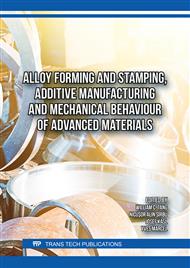p.15
p.29
p.37
p.47
p.55
p.71
p.85
p.93
p.105
Ultrasound Welding of Automotive Seat Belts
Abstract:
Ultrasonic welding is a process that has been in continuous development since it was first introduced in the 1940s. The process is widely used to join or reform plastic or metal materials using mechanical vibrations propagated at frequencies ranging from 20.000 Hz to gigahertz levels. These vibrations produce heat that melts the materials to be welded at their contact surface. In addition to the heat produced by the vibrations, a preset pressure is applied from the control panel of the welding machine to ensure perfect contact between the welded parts.[1] The ultrasonic welding process is time-efficient, taking less than 0.2 seconds in some cases, and does not damage the outer surface of the parts. The whole paper is structured in two parts, one theoretical and one practical, these parts are divided into six chapters. The first chapter of the paper explains the propagation process of ultrasound and what it actually is, as well as a brief history of ultrasound. In the second chapter there are generalities about ultrasonic welding and how this process is carried out and a history of ultrasonic welding. The third chapter introduces us to the subject of the paper, namely ultrasonic welding of plastics. Chapter four deals with the materials used to produce seat belts and their evolution over time. In chapter five we present all the equipment used for the case study. Chapter six is the case study and the explanation of all the steps performed to find out some results about ultrasonic welding of seat belt samples. Finally, I presented the conclusions drawn from the whole research process and the results obtained for the ultrasonic welding process of seat belts.
Info:
Periodical:
Pages:
55-69
Citation:
Online since:
November 2025
Authors:
Price:
Сopyright:
© 2025 Trans Tech Publications Ltd. All Rights Reserved
Share:
Citation:


